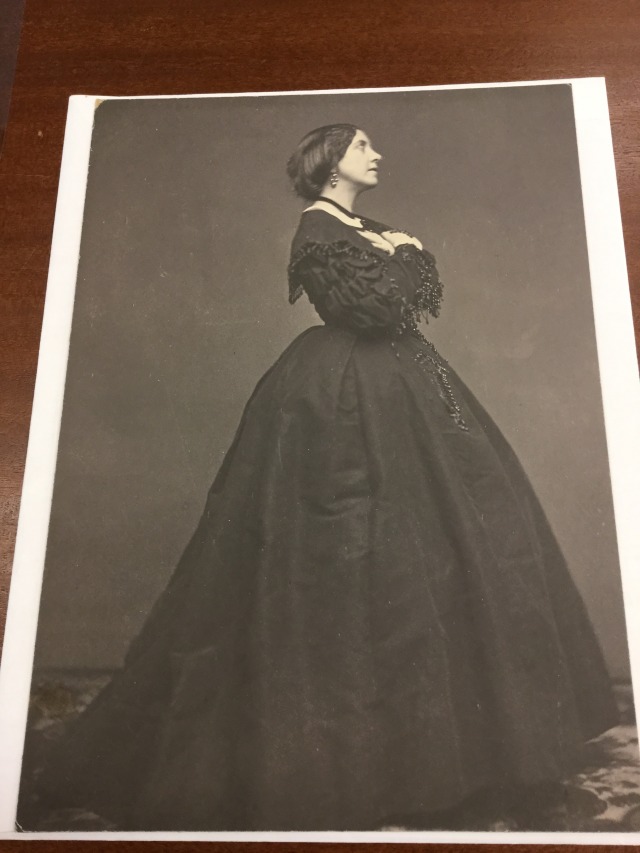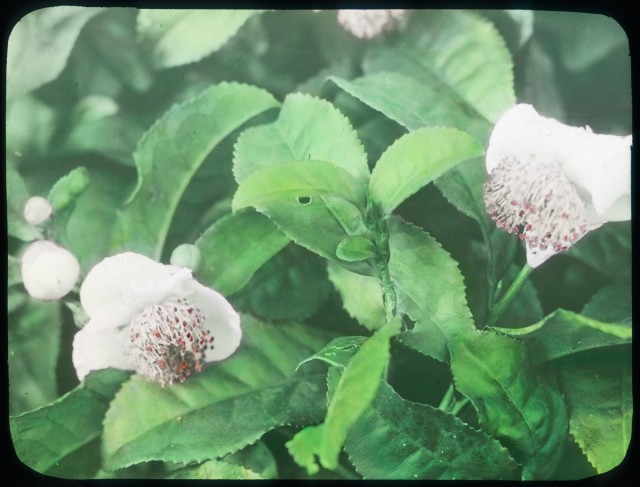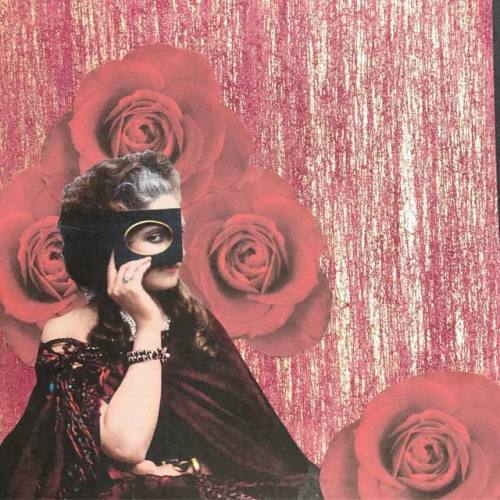#earlyphotography

This early salted paper print was commissioned by Charles Poulson as part of a series of 120 cityscape views by Philadelphia painter and photographer Frederick De Bourg Richards (1822-1903) to document the changing architecture of the city.
Richards’ painter’s eye for composition is visible in this perspective view of Carpenters’ Hall, the historical building that housed the Library Company 1773-1790. Richards’ photograph encapsulates the tacit acknowledgement that a city needs to preserve its history but also needs to evolve to remain vital.
Frederick De Bourg Richards, Carpenters’ Court and Hall (in perspective), Chestnut St. bet. Third & Fourth St. May 1859.
 ALT
ALTHand-coloring technique was introduced in Europe in the 1840s, but the practice of hand coloring photographs became more refined and widespread in Japan. By the 1880s, it had become a common practice and a defining characteristic of Japanese tourist photography.
Working on a low wooden table laid out with brushes, inkstones, and porcelain bowls, artists applied colors, prepared with a small amount of buckskin glue, in a delicate and precise manner. In the 1880s and 1890s they began using more vivid colors made from aniline dyes.
The process of coloring a photograph was infinitely tedious, and a master colorist could be expected to produce two or three finished prints during a twelve-hour day. Eventually, studios hired more artists and set up a kind of production line with each man or woman responsible for a range of colors or a particular area of a photograph. One artist colored faces, for example, then he or she passed the photograph along to another who colored clothing, and so on. This greatly increased the number of finished prints in a day. Various sources estimate that by the 1890s successful studios employed anywhere from around 20 to 100 colorists.
Flower seller, Japan.
Lantern slides, hand-colored.
8 x 10 cm
Creation Date: 1900-1940
Repository: Harvard Fine Arts Library, Special Collections
HOLLIS number: olvwork371874
 ALT
ALT ALT
ALTSalted paper print was an early negative/positive printing process developed by William Henry Fox Talbot in England in 1839. Many beautiful examples of this process were created in the 19th century and can be found in a variety of photograph collections.
Harvard’s Weissman Preservation Center (WPC) undertook Salt Print Initiative at Harvard, a university-wide project to preserve and enhance access to salt prints at Harvard. The project focused on photogenic drawings, paper negatives, and salted paper prints (positive prints created from paper or glass-plate negatives) found throughout Harvard’s libraries, archives, and museums. The Fine Arts Library holds many salted prints in our special collections.
You can learn more about Salt Print Initiative at Harvard on https://projects.iq.harvard.edu/saltprintsatharvard
 ALT
ALTMay is National Photography Month! The Fine Arts Library holds more than 150,000 photographs and slides documenting Islamic art and architecture, as well as ethnographic views that provide cultural context.
Middle East and Islamic Photographs Collections are strong in albumen silver prints produced by commercial studios in the second half of the 19th century. These images are complemented by the photographic output of the first generation of scholars of Islamic art history, such as K.A.C. Creswell and Ernst Herzfeld, taken with documentary intent.
Most prominent is the Harvard Semitic Museum Photographic Archives. Developed at the Semitic Museum between 1891 and 1992 and transferred to the Fine Arts Library in 1995, the archive includes more than 38,000 images in a variety of formats.
Turkey, Contantinople. Mosque of Santa Sophia.
Robertson, James, 1813-1888, English [photographer]
Albumenized salt print: Istanbul, Hagia Sophia (Aya Sofia Camii)
10” x 12”, 25.5 x 30.6 cm
salted paper prints
photographs
Repository: Harvard Fine Arts Library, Special Collections
1851-1853
HOLLIS number: olvwork365432
 ALT
ALT ALT
ALTApril is National Month of Hope, and do we need hope more than ever right now. Here in Cambridge, Massachusetts, we’re seeing many flowers blooming now, including cherry blossoms on campus. Spring flowers are the sign of hope.
Image 1: Cherry blossoms outside the library taken on April 12, 2022.
Image 2:
Cherry blossoms (sakura), Japan.
Lantern slides, hand-colored.
8 x 10 cm
Part of Etz-Trudell collection of hand-colored lantern slides of Japan, Korea and India
For further information, please see HOLLIS record 10155668.
1900-1940
Harvard Fine Arts Library, Special Collections
HOLLIS number: olvwork367847
Happy Hina-Matsuri 雛祭り (Doll’s Festival or Girls’ Day in Japan)!
In Japan, this special day is celebrated every year on March 3rd. Hina-ningyo is a set of dolls representing the Emperor, Empress, attendants, and musicians in traditional court dress of the Heian period in Japan. The dolls are displayed on platforms covered with a red cloth, as you can see in this lantern slide.
“During Hina-matsuri and the preceding days, girls hold parties with their friends. Typical foods include hina-arare (雛あられ) (multi-colored rice crackers), chirashizushi (ちらし寿司) (raw fish and vegetables on rice in a bowl or bentobox),hishi mochi (菱餅) (multicolored rice cakes), ichigo daifuku (いちご大福) (strawberries wrapped in adzuki bean paste and mochi), Sakuramochi (桜餅) and ushiojiru (うしお汁) (clam soup, as clam shells represent a joined pair). The customary drink is shirozake (白酒, “white sake”), also called amazake (甘酒,“sweet sake”) a non-alcoholic sake.” – from Wikipedia.
Sounds like a great party time for girls in Japan!
Festival on 3rd March
Japanese Doll Festival or Girls Day (Hina Matsuri), held on March 3.
Hand-colored lantern slide.
3.25 x 4 in.
Part of Etz-Trudell Collection of Hand-Colored Lantern Slides of Japan, India, and Korea
Harvard Fine Arts Library, Special Collections
HOLLIS number: olvwork367312
Happy Hina-Matsuri!!
Post link
"La Vie En Rose" by #arianachriest Virginia Oldoini, Countess of Castiglione (early patron of photography as an expression/art form) - getting some work ready for a show this Friday! #analogcollage #theeleventhsign #makesomethingeveryday #arianatheartisan #collage #contessadicastiglione #earlyphotography #artsponsor
https://www.instagram.com/p/BwpQmxSHVpF/?utm_source=ig_tumblr_share&igshid=1gsgebheca7of
Post link


